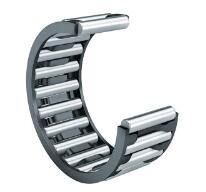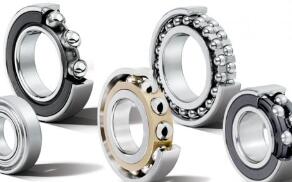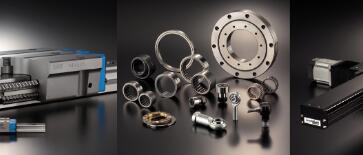The Pros and Cons of Needle Bearing vs Ball Bearing
Explore the key differences between needle & ball bearings in terms of components, uses advantages & disadvantages.
Learn which type of bearing is best for your needs in our article.
Discover the best type of bearing for your application with our comprehensive guide on the pros and cons of needle bearings vs. ball bearings.
Learn key differences, uses, and common applications. Save time and increase efficiency with our expert analysis.
Needle bearings have the advantage of low friction resistance, low power consumption, high mechanical efficiency, and ease to start.
However, they have the disadvantage of being relatively expensive and producing more noise than other bearings.
Applications include compressors, transmissions, pumps, torque converters, and suspension systems.
Ball bearings have the advantage of being relatively stable and having a small starting and running torque, which results in low power loss and high efficiency.
However, they have the disadvantage of having a smaller load capacity for their size.
Applications include small power motors, automobile and tractor transmissions, machine tool gearboxes, general machinery, and tools.
Our guide covers the pros and cons of needle and ball bearings.
It delves into the specific characteristics of each type, their typical applications, and the best practices for maintaining them for optimal performance.
Keep reading to gain a deeper understanding of the subject.
Definition of needle bearings and ball bearings
Needle bearings

Needle bearings are a type of roller bearings that use small cylindrical rollers.
The key difference between a needle roller bearing and other types of roller bearings is the ratio of the diameter and length of the rollers.
The bearing is considered a needle roller bearing if the rollers' diameter and length ratio are between 0.1 and 0.4.
One of the main advantages of needle bearings is their large surface area in contact with the bearing's outer surfaces, resulting in a higher load-carrying capacity than ball bearings.
This makes them well-suited for applications where high loads are present, and space is limited.
The typical structure of a needle bearing includes a needle cage, which serves to orient and contain the needle rollers, the needle rollers themselves, and an outer race.
The needle cage is typically made of a material such as stamped steel or plastic and helps to keep the needle rollers in place, while the outer race is generally made of a more complex material such as steel or brass.
Needle bearings are commonly used in various industrial and automotive applications, including gear pumps, motors, compressors, and power transmission equipment.
They are also used in applications where high speeds, high loads, and minimal space are required, such as in aircraft and aerospace applications.
Needle bearings are available in a variety of different designs, including radial, thrust, and combined radial and thrust.
Radial needle bearings are designed to support radial loads, while thrust needle bearings are designed to support axial loads.
Combined radial and thrust needle bearings are designed to support both radial and axial loads.
In terms of maintenance, needle bearings have a relatively low maintenance requirement.
They are typically lubricated with grease or oil, and the lubricant should be checked and replenished as needed.
Additionally, they should be kept clean and free from debris to ensure proper operation.
Overall, needle bearings are a versatile and durable roller bearings that are well-suited for a wide range of applications.
They offer a high load-carrying capacity and minimal space requirements and are available in various designs to meet different application needs.
Ball bearings

Ball bearings are a rolling-element bearing that uses balls to maintain the separation between the bearing races.
They are designed to reduce rotational friction and support radial and axial loads.
The basic design of a ball bearing includes at least two races that contain the balls and transmit the loads through the balls.
One of the races is typically stationary, while the other is attached to the rotating assembly, such as a hub or shaft.
As the bearing rotates, the balls roll between the races, which reduces the friction and wear on the bearing.
One of the main advantages of ball bearings is that they have a lower friction coefficient than other types of bearings.
This allows them to operate with less heat and wear, resulting in a longer bearing lifespan.
They also have a high-speed capability, which makes them suitable for high-speed applications.
Ball bearings are available in various types, including radial, angular contact, and thrust.
Radial ball bearings are designed to support radial loads, while angular contact ball bearings are designed to support axial and radial loads.
Thrust ball bearings are designed to support axial loads.
Ball bearings can be found in various applications, from automobiles and appliances to industrial machinery and equipment.
They are used in electric motors, pumps, gearboxes, and other rotating equipment.
They can also be found in applications where high speeds, low friction, and minimal maintenance are required, such as in aircraft and aerospace applications.
In terms of maintenance, ball bearings require regular lubrication, which can be oil or grease.
The lubricant should be checked and replenished as needed to ensure proper operation of the bearing.
Additionally, they should be kept clean and free from debris to ensure proper operation and extend their lifespan.
Overall, ball bearings are a versatile and durable type of bearing that is well-suited for a wide range of applications.
They offer low friction, high-speed capability, and minimal maintenance.
They are available in different types to meet application needs, such as radial, angular contact, and thrust ball bearings.
Comparison between needle bearings and ball bearings
Needle Bearings
Components: Needle bearings consist of long thin rollers that are cylindrical.
These rollers are typically made of hardened steel or other durable materials.
Use: Needle bearings are designed for applications with large radial pressure and low rotational speed.
They are well-suited for applications with high loads and limited space, such as in gear pumps, motors, compressors, and power transmission equipment.
Advantages: Needle bearings have several advantages over other types of bearings.
They have a low friction resistance, which results in low power consumption and high mechanical efficiency.
Additionally, they are easy to start, which means they can be used in applications requiring frequent starting and stopping.
Disadvantages: While needle bearings have many advantages, they also have disadvantages.
One of the main disadvantages is that they are relatively expensive compared to other types of bearings.
Additionally, they tend to produce more noise than different types of bearings.
Application: Needle bearings are commonly used in various industrial and automotive applications, including compressors, transmissions, pumps, torque converters, and suspension systems.
They are also used in applications where high speeds, high loads, and minimal space are required, such as in aircraft and aerospace applications.
In summary, needle bearings are roller bearings that use small cylindrical rollers.
They are well-suited for applications with high loads and limited space, such as in gear pumps, motors, compressors, and power transmission equipment.
They have low friction resistance, power consumption, and mechanical efficiency; however, they are relatively expensive and noisier than other types of bearings.
Ball bearings
Components: Ball bearings consist of long thin rollers that are spherical. These rollers are typically made of hardened steel or other durable materials.
Use: Ball bearings are designed for applications with low radial pressure and high speed.
They are well-suited for applications where low friction and high-speed capability are required, such as in electric motors, pumps, gearboxes, and other rotating equipment.
Advantages: Ball bearings have several advantages over other types of bearings.
They are relatively stable and have a small starting and running torque, which results in low power loss and high efficiency.
Additionally, they can tolerate some misalignment of the inner and outer races.
Disadvantages: While ball bearings have many advantages, they also have disadvantages.
One of the main disadvantages is that they have a smaller load capacity for their size than other rolling-element bearings due to the smaller contact area between the balls and races.
Application: Ball bearings are commonly used in various applications, from automobiles and appliances to industrial machinery and equipment.
They are used in small power motors, automobile and tractor transmissions, machine tool gearboxes, general machinery, and tools.
They can also be found in applications where high speeds, low friction, and minimal maintenance are required, such as in aircraft and aerospace applications.
In summary, ball bearings are a rolling-element bearing that uses balls to maintain the separation between the bearing races.
They are well-suited for applications where low friction and high-speed capability are required, such as in electric motors, pumps, gearboxes, and other rotating equipment.
They are relatively stable, have small starting and running torque, slight power loss, and high efficiency, but have a smaller load capacity for their size than other types of rolling-element bearings.
They are widely used in small power motors, automobile and tractor transmissions, machine tool gearboxes, general machinery, and tools.

Conclusion
In conclusion, the choice between needle and ball bearings depends on the specific application and its requirements.
Our guide analyzes the pros and cons of each type of bearing, their common uses, and best practices for maintenance.
By understanding the key differences, you can make an informed decision and increase efficiency in your operations.





